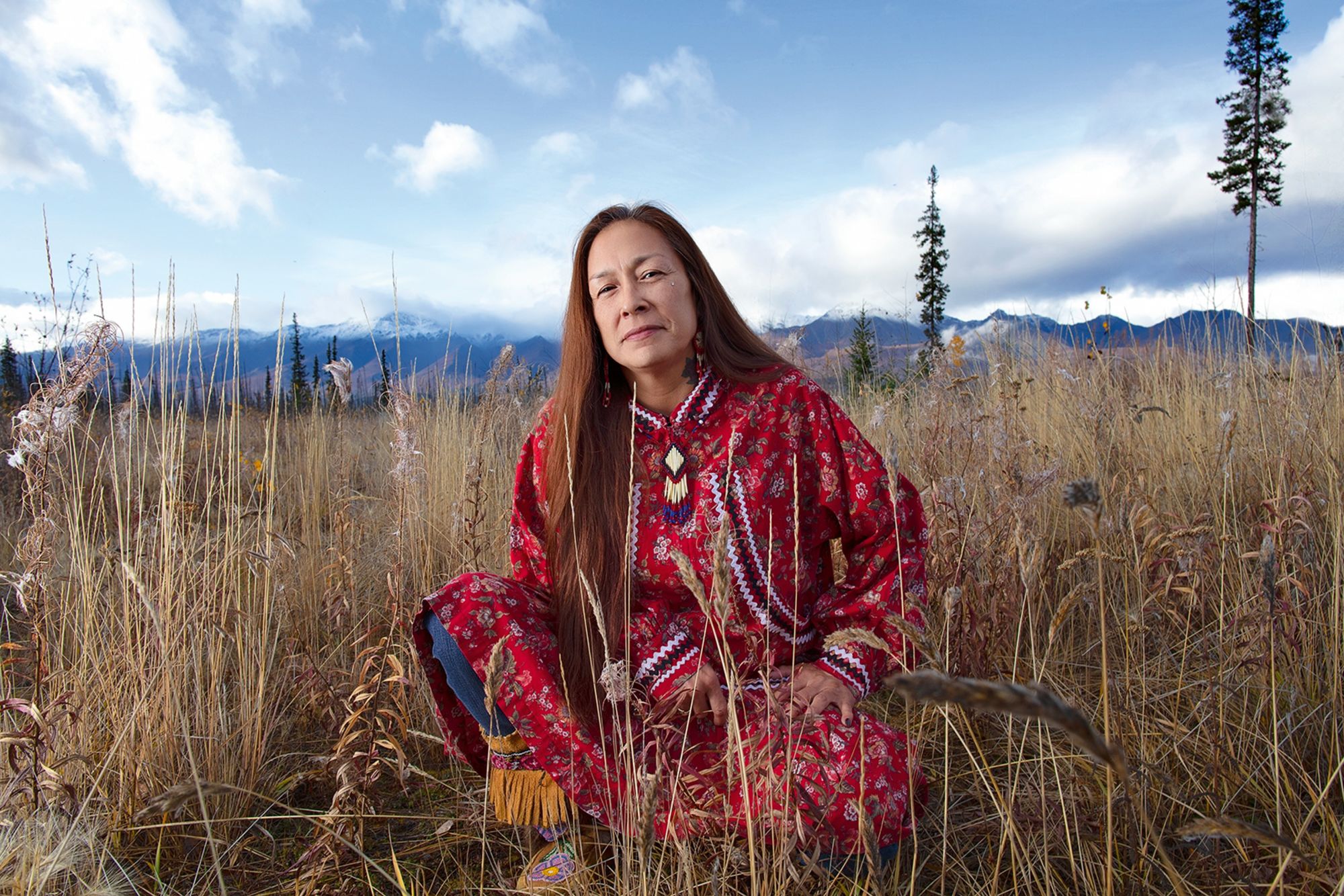Editor’s Note: This feature is part of CNN Style’s series Hyphenated, which explores the complex issue of identity among minorities in the United States.
Over a decade ago, when Matika Wilbur began photographing all 562 federally recognized tribal nations in the US (a number which has since grown to 574), she wanted to make a comprehensive portrait of contemporary Indigenous life — one that not only corrected harmful, persistent stereotypes, but could be used as a positive resource for the youngest Native American generation.
“Project 562 is rooted in narrative correction work,” Wilbur explained in a video call. “When I started, I was looking at uncovering contemporary Indigenous identity and really looking at what it looks like to be a Native person right now.”
What Wilbur didn’t know at the time was that the series, and now recently published book, “Project 562: Changing the Way We See Native America” — would catalyze her homecoming. Wilbur, who is a member of the Swinomish and Tulalip tribes in the Pacific Northwest, was living in Seattle in 2012 just before she began the project. By its end, when she had logged 450,000 miles on the road, Wilbur became pregnant, and she and her husband decided to return to live in Tulalip.
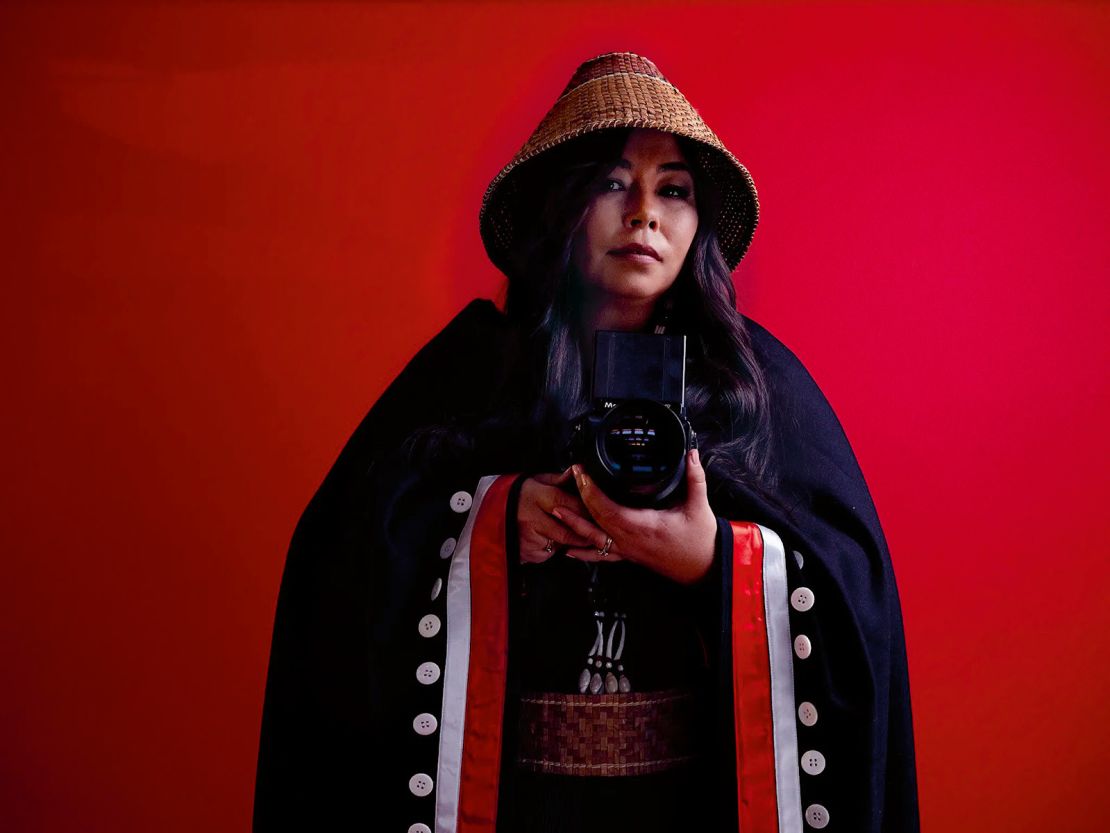
“I made a very conscious decision to move home, so that my baby would have that relationship with this place,” Wilbur said. “So her afterbirth could be buried here, where her grandmother’s cedar tree is and where her ancestors are. I realized that was very important to me.”
Project 562 is staggering in its scope, representing the Miccosukee Tribe in the Everglades all the way to the Siberian Yupik people far off the Alaska coast.
The portraits — from elders and teens to multiple generations posing together — have a sense of intimacy and warmth, with each image accompanied by her collaborators’ own accounts of their lived experiences. Through its interviews, the project delves deeply into kinship and love, displacement and reconnection, the generational impacts of colonialism and racism, environmental justice and activism, and inclusion and belonging.
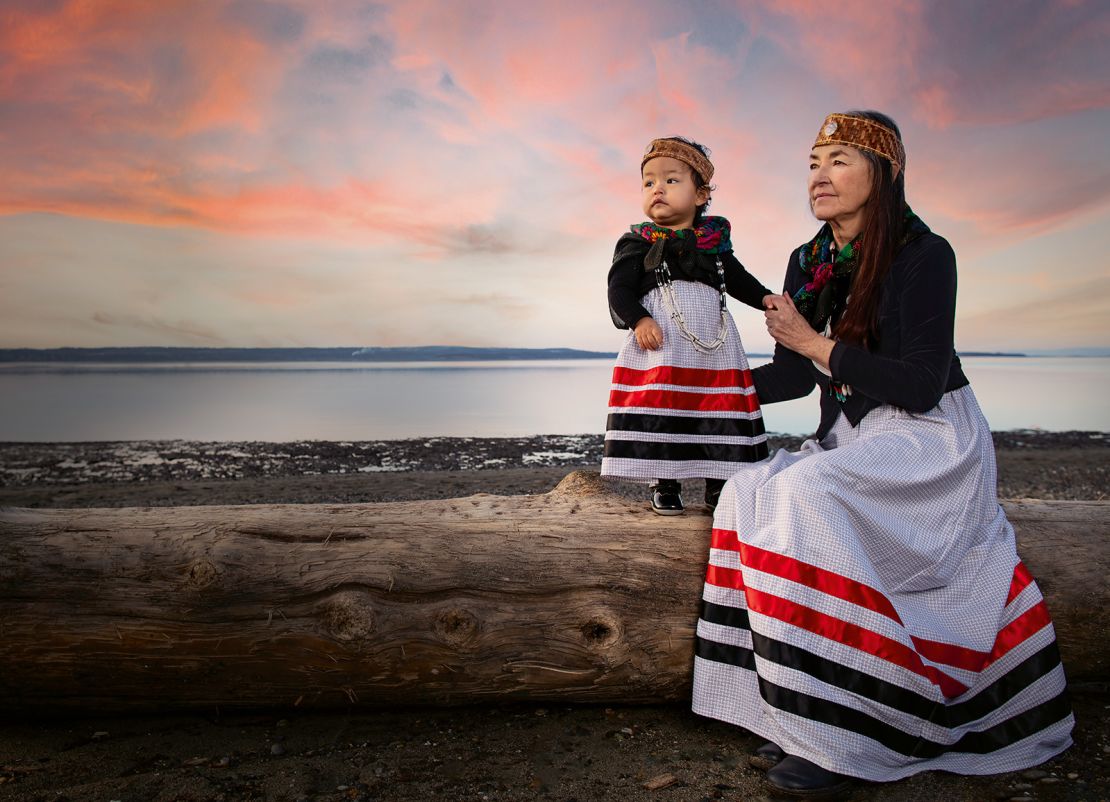
As time went on, Wilbur felt deeply changed by the work, gaining a greater understanding of herself in relation to the land on which she was raised.
“We do have these systemic ways of developing our children to have relationships with the place that they come from, and to… teach them to become stewards,” Wilbur said. “As I started traveling, I started to put together and realize the different ways that these different communities do that. For me, it felt intrinsic, because I grew up fishing, I grew up on canoes, I grew up going to the longhouse, I grew up going to ceremony. And all of these things made me a person of the tide, but I wouldn’t have told you 10 years ago, that that was how I identify.”
And the more she traveled, the more she understood how “site-specific” her identity was, Wilbur explained. “I would meet the people of the blue-green waters and the people of the tall pine trees or the people that live within the four sacred mountains, and I would get to go to ceremonies and witness cultural protocol that made their communities deeply, intrinsically, inextricably connected to the land that they come from. That was profound for me.”
Below are some portraits featured in “Project 562,” and the stories behind them.
Dr. Henrietta Mann
CHEYENNE
Dr. Henrietta Mann has been an educator for more than five decades, architecting Native American studies programs for multiple universities. She was recently honored with a National Humanities Medal by President Biden and appears on the cover of “Project 562.”
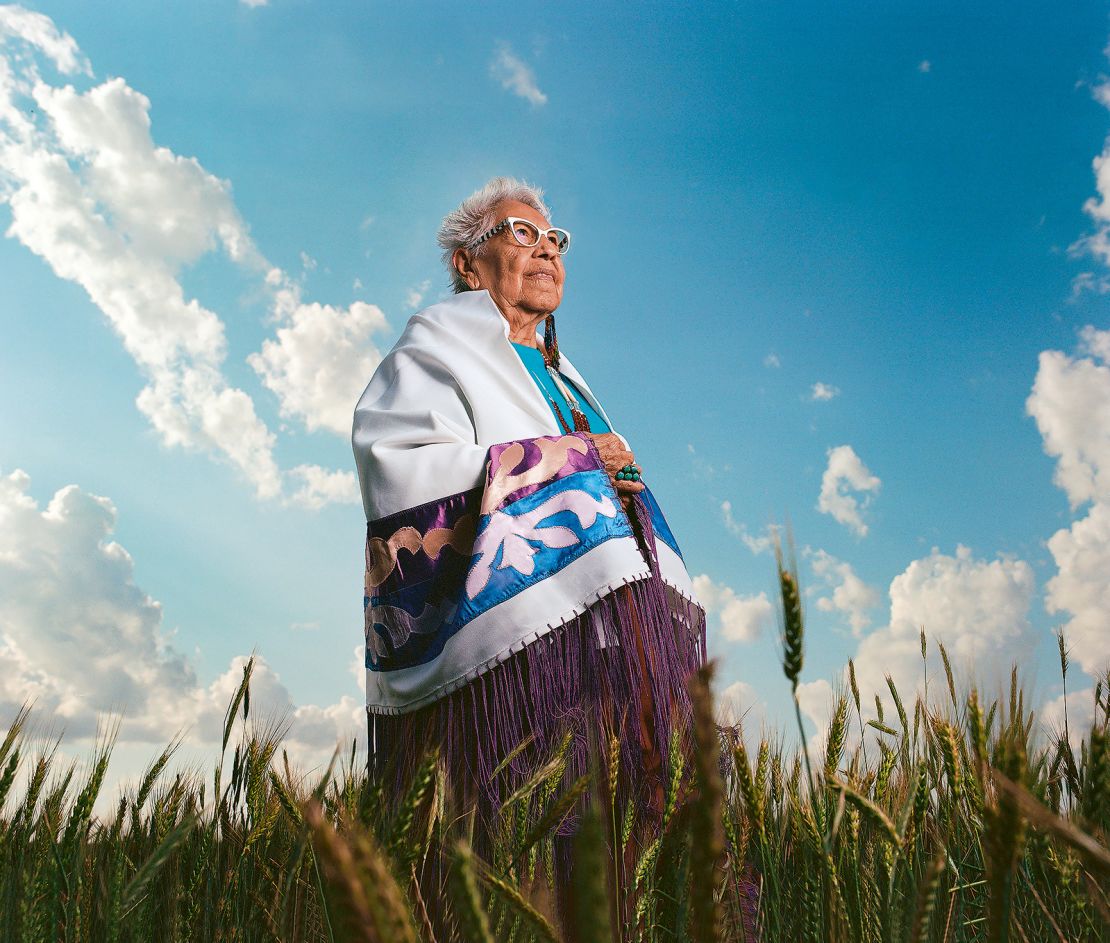
“I wanted to have a matriarch on the cover,” Wilbur told CNN. “I really have thought a lot about rematriation (restoring sacred principles), and the work of rematriation and how important it is to uplift our women who have worked for decades, like Auntie Dr. Henrietta Mann who dedicated her life to the betterment of Indigenous people.”
Hannah Tomeo
COLVILLE, YAKAMA, NEZ PERCE, SIOUX, SAMOAN
Hannah Tomeo is an athlete and a Northwest Indian Youth Conference Princess. Wilbur photographed her in the Methow Valley outside of the multiday conference, which is hosted by a different tribe in the region each year. At the 2016-2017 event, Tomeo and Wilbur were both keynote speakers.
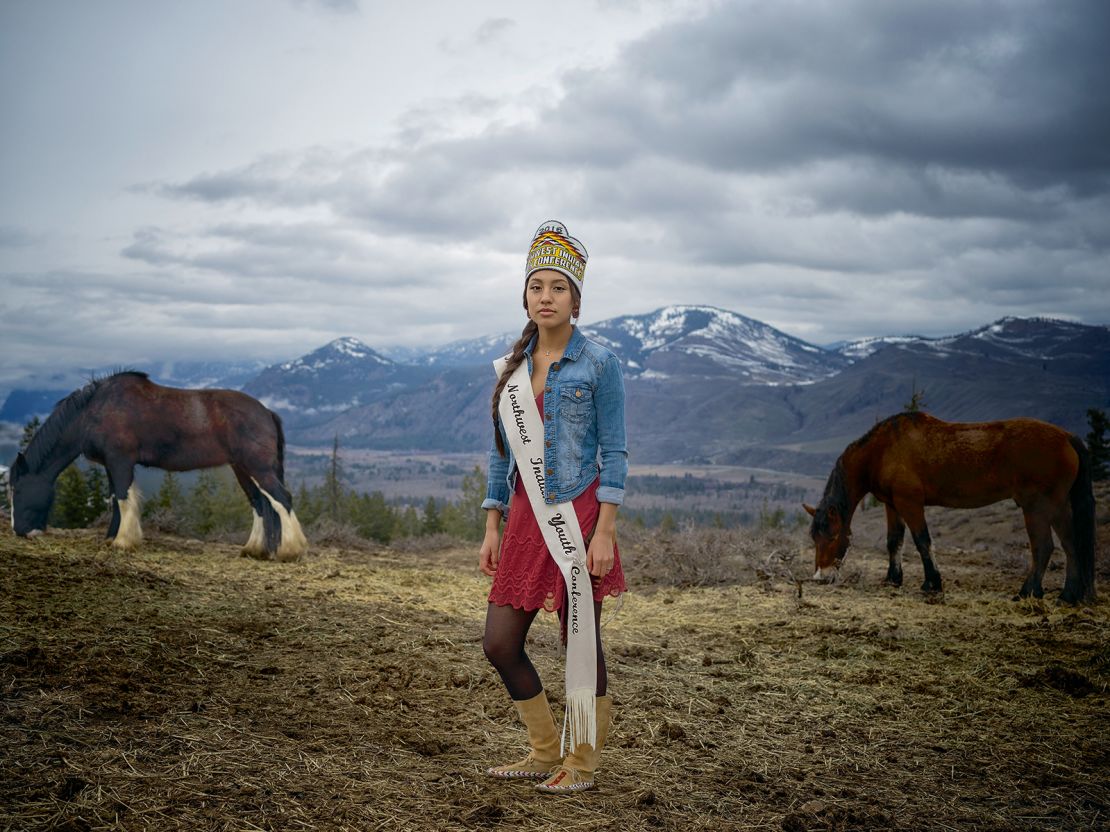
“Running has been my absolute passion and my stability, but I felt as if no one wanted me to succeed in high school,” Tomeo told Wilbur for “Project 562.”
“My teacher told me it was in my genetics to be an alcoholic; my basketball coach would drug test only me on the team; my track coach told me I would just be another stupid Indian runner with no chance in the real running world. I let those words motivate and push me until I earned the fastest times in the school, but they still wouldn’t let me race.” Tomeo was replaced in races with no explanation until she finally quit, she explained. “My spirit had officially been broken. I never thought I would run again. Then my dad gave me these words: ‘You can either be a quitter or come back a success story. Your choice.’”
“That summer I trained harder than ever and came back strong. I made it to State. I made first team and placed in the Nike meet in Boise and at Footlocker in California… My story isn’t over.”
Darkfeather Ancheta, Eckos Chartraw-Ancheta, and Bibiana Ancheta
TULALIP
Darkfeather Ancheta (left) and her sister Bibiana have become “like sisters” to Wilbur, she noted in the book. Here they are pictured with Bibiana’s son, Eckos.
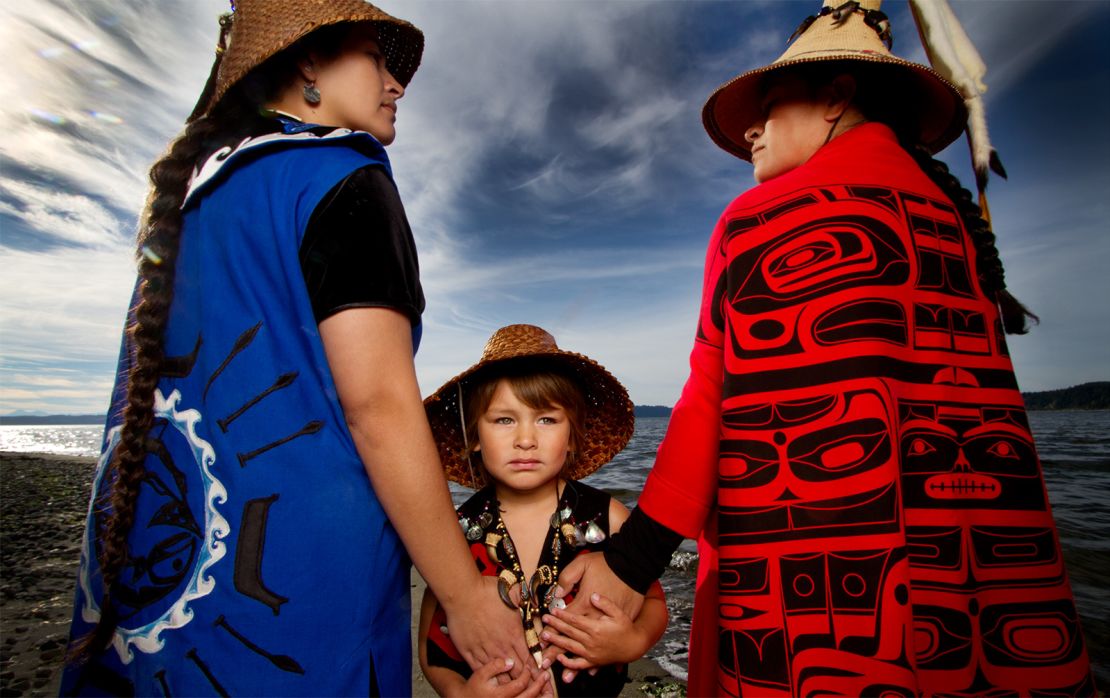
“I had a dream about them standing there like (in the photograph) in front of Tulalip Bay,” Wilbur told CNN. “So I called them and asked them if I could take their photo in the way that I’d seen in my dream.”
“Our communities still have these kinship systems and these familial ties where an auntie is like a second mom. She is the protector and equally invested in the growing of the child… I wanted to try to create an image with this image that really showed and encapsulated, you know, the way that we take care of our babies, the way we love our babies.”
Joshua Dean Iokua Ikaikaloa Mori
KĀNAKA MAOLI
Joshua Mori is a farmer, teacher and founder of community, wellness and agriculture nonprofit Iwikua in Kauaʻi, Hawaii. Wilbur photographed him with one of his three children on his aquaponic farm, a method for water-based farming that uses fish as a natural fertilizer.
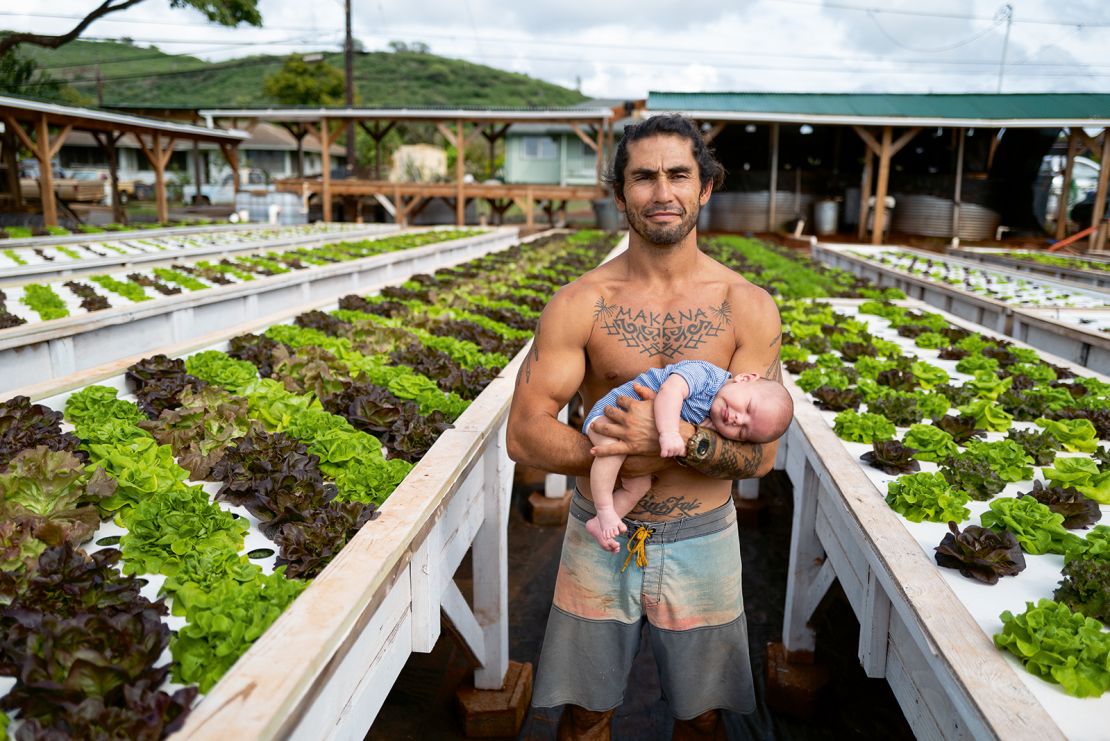
“My work is about wanting to take back the food system and really attack colonialism at the source,” Mori told Wilbur for “Project 562.” “At our root source, our diet, which affects everything in our bodies — how we feel, how we think, how we love, how we procreate. Food, in my opinion, affects all of that. So we’re doing aquaponic farming, which is just taking a traditional model of a food system and just shrinking it down to modern technology. We take our traditional Native knowledge and integrate it with modern technology to make it more accessible.”
“The kids learn when they come out here traditional hale building (house building), traditional farming, working in kalo patches, and also modern farming techniques,” he added. “They learn how to spearfish and fish traditionally. Also, star navigation. How to use all of the tools, really, how Hawaiians became Hawaiians.”
Drew Michael
YUP’IK, IÑUPIAQ
Drew Michael is a traditional Yup’ik mask-maker and identifies as Two Spirit, or having both masculine and feminine spirits. Michael and his twin brother were adopted and raised by non-Native parents in Alaska and spoke with Wilbur about reconnecting to his Indigenous identity. Wilbur photographed him in his home.
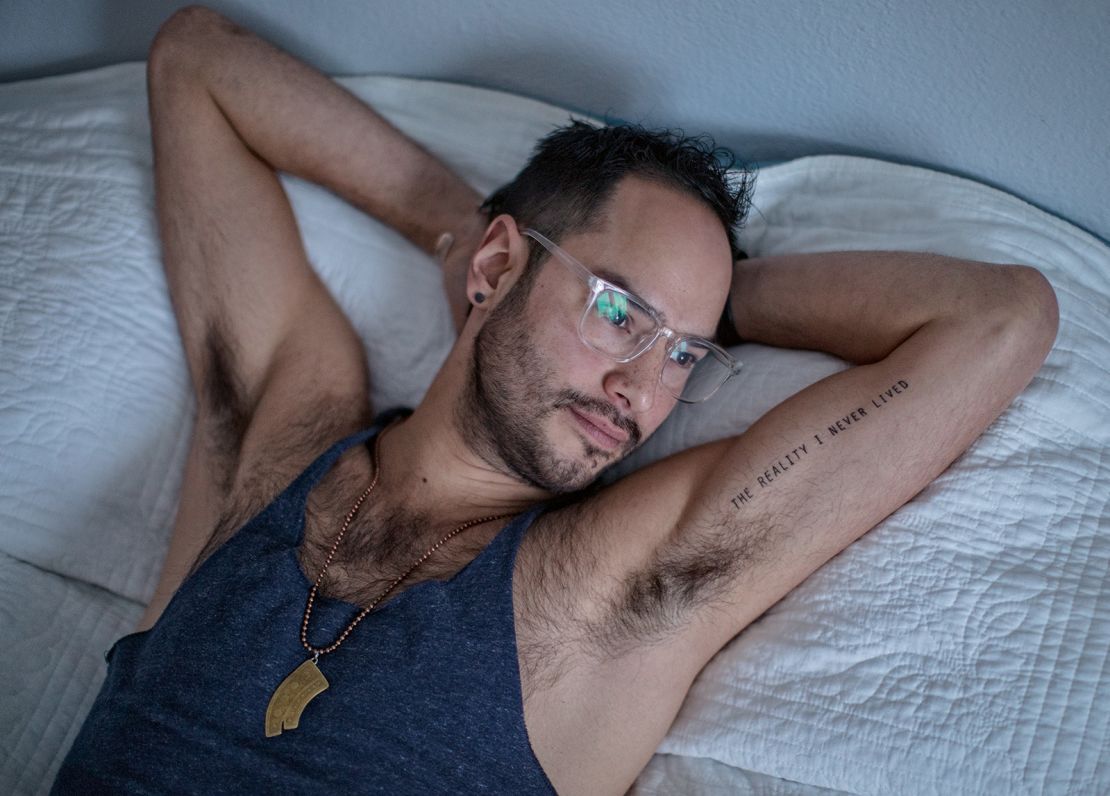
“Growing up, I did not have a good sense of my culture or identity as a Yup’ik and Iñupiaq man… I did not have access to that until I took a carving class with my father,” Michael told Wilbur in “Project 562”. “I was able to create my own piece, my own representation, almost a copy of a mask in a book from an exhibition. That was the first time that I was introduced to my culture, and I felt like I was starting to own it a little bit. As I learned more about masks, why they were used, who used them, and then the ceremonies and rituals, I started to see and learn about myself through the masks.”
“I know especially in Yup’ik culture, people were Two-Spirited, and typically they would be healers because they could see into both worlds, the masculine and feminine, and can almost hold hands with both… so, since I am Two-Spirited, and I also do masks and other forms, I try to talk about different healing within my work.”
Fannie and Robert Mitchell
DINÉ
The Mitchells have been married for more than six decades. Robert, a former railroad worker, now raises livestock on their land. The couple prefer to speak in Navajo, so their daughter-in-law translated for Wilbur. Wilbur spent her 30th birthday with them, and was treated to dinner, cake and gifts in their home.
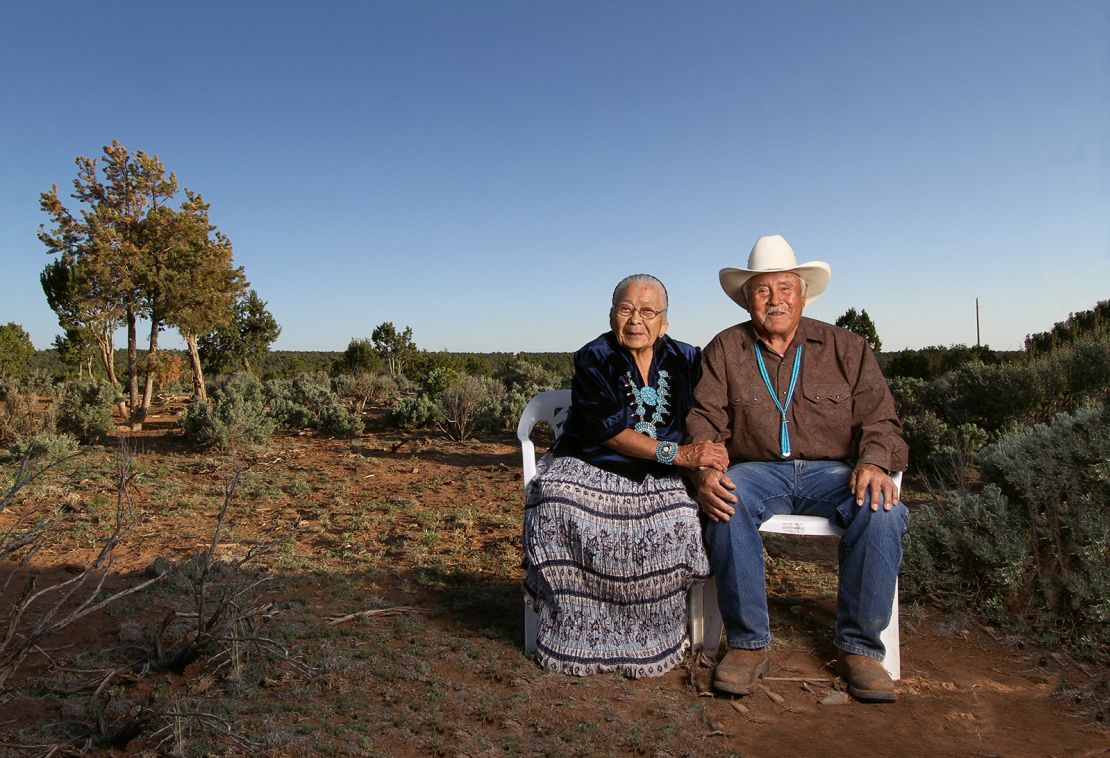
“There’s not a lot of Native people that you meet anymore that just speak their language. And so for me, it was a profound experience, to be in a home where they’re still living very traditionally, and taking care of sheep, and speaking their language,” Wilbur told CNN.
“In my time on the road, I approached it in really the only way that I know how — which is as a Native person. You don’t show up empty-handed, you bring food, you stay a while. You leave traditional gifts behind, you stay in touch with folks, and so I felt really fortunate to get to meet these folks and to get to be in their home for a little while.”
Out of frame, she said, there was a touch of chaos taking place. “There’s a drawn-back version of this portrait, where there’s a sheep licking me as I’m taking this photo and there’s two horses trying to eat my light… and that’s why they’re laughing.”
John Sneezy
SAN CARLOS APACHE
John Sneezy, who identified as Two Spirit, was a Grass Dancer at powwows for more than three decades, but was not able to perform in the Traditional Cloth category — which Wilbur notes is danced by women — until 2016, when he participated in the Bay Area American Indian Two-Spirit Powwow (BAAITS). Wilbur photographed him in San Francisco. He died before the book published.
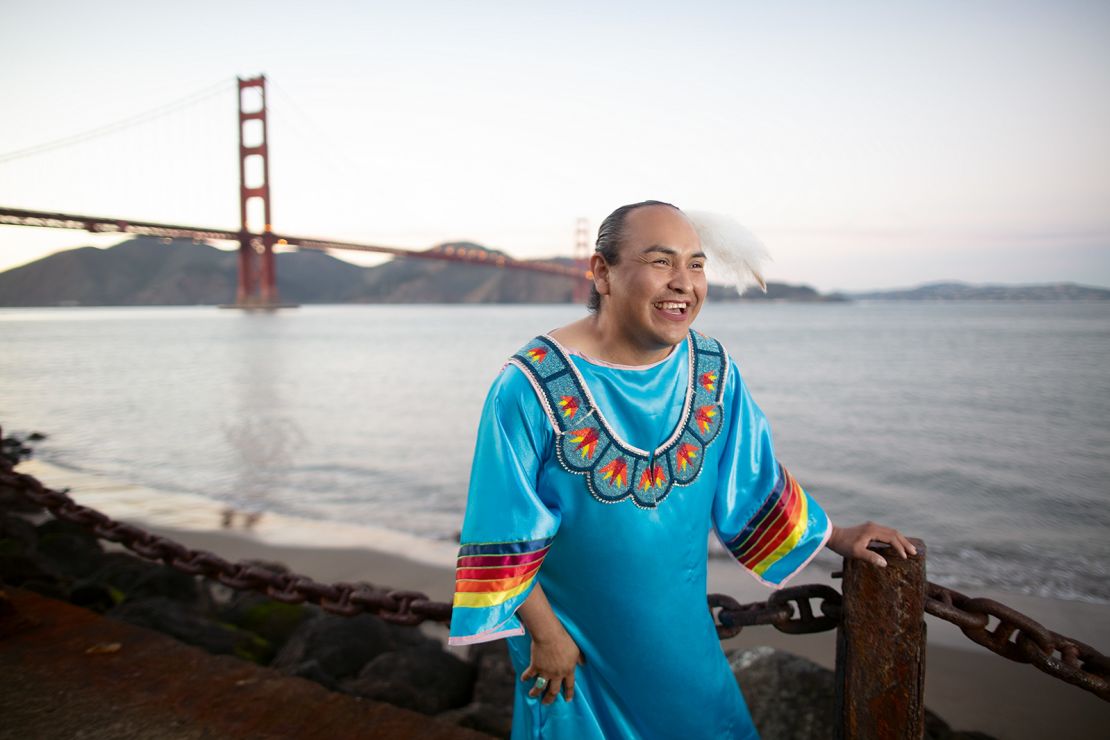
“Our young Two Spirit people in Indian Country experience a lot of violence for their identity. John would say, ‘I dance, and I wear women’s regalia, and I want to be shown in your book like this,’” Wilbur recalled to CNN. “John called me and told me that it was really important to him that we continue to uplift stories about Two Spirit people, so that our young Two Spirit relatives feel safe and seen and heard.”
“John had spent his whole life wanting to dance in a woman’s Apache dress, but didn’t feel safe to do so until he traveled to the Bay Area American Indian Two-Spirit Powwow, which I think says a lot about the way that members of the LGBTQ+ community are treated in some of our communities. It’s really important in national conversations about Indigenous identity that we make sure to acknowledge our Two Spirit relatives and create space for representation. And John would want me to share that with you.”
“Project 562: Changing the Way We See Native America” is available now.
Top image: Amanda Attla (Athabascan, Yup’ik) from Huslia, Alaska.
